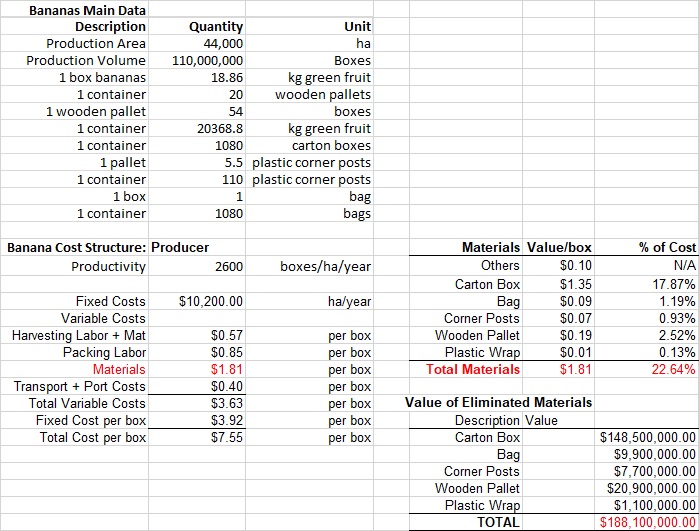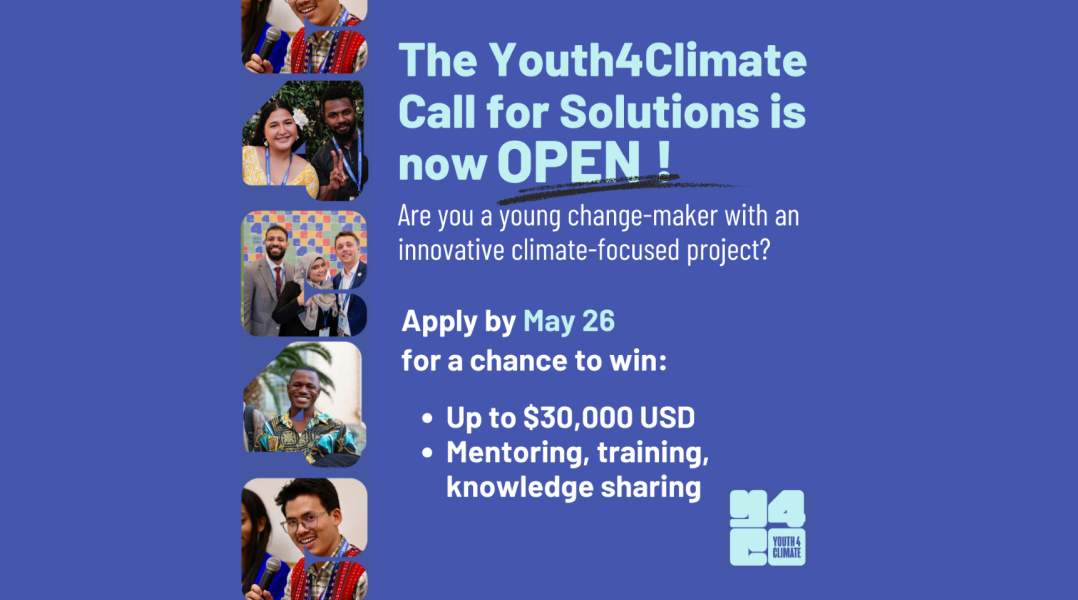Creating the backbone to a Circular Economy
We are developing a supply chain system that guarantees an additional revenue stream from the return trip while eliminating most single-use packaging. We modularize space across the entire supply chain to utilize that space most efficiently. A recent study in the banana sector of Costa Rica alone estimates a US $188,000,000 annual packaging reduction while global CO2 reductions are estmated at 1.2 gigatons annually by utilizing our circular concept in supply chains.
We are currently in discussions with EARTH University in Costa Rica to help us conduct a pilot study to verify that we can actually eliminate the $188,000,000 worth of single-use packaging in the banana value chain that the attached document outlines. This is part of an ongoing cost/benefit analysis that we are conducting to verify the efficacy of our new patented system as it applies to the Circular Economy ISO/TC 323 for which we are a relatively new member with the Standards Council of Canada. ISO's direction so far seems to be focused on ways to build products that are easily recycled and this is certainly an important aspect of the circular concept, but it might be argued that this puts the proverbial cart before the horse. If I'm to start designing my products to be more easily recyclable, then my financial analysis would probably start by determining if I can retrieve these products cost effectively enough to justify undertaking such a strategy in the first place. We have been studying circular economics for quite some time now and have come to realize that it is our current supply and reverse chain processes that limit our ability to develop an effective and efficient circular economy.
We modularize space across the entire value chain using four-foot cubic aluminum “modules” that are reusable and fully recyclable and are attached to a robotic carousel housed in a framework that slides into a steel shipping container and creates an automated storage and retrieval system that is mobile. This eliminates the need for loading docks so contents within the container can still be accessed even when the containers are stacked to create efficient storage without the need for aisles between them. Each module within the container is uniquely identified and tracked globally with Internet of Things technology using our proprietary cellular/satellite communication system. This new patented system sets the pace for completely autonomous supply chains and creates a platform for additional Robotic, IoT, Distributed Ledger (Blockchain), Artificial Intelligence, Cloud/Edge Computing, Analytic, Physical Internet, etc. technologies while creating the backbone to the Circular Economy.
We handled reverse logistics for Walmart for fifteen years and it is from that experience that we are developing a new system to address supply chain problems. Until our reverse chains are as well developed as our supply chains it will be difficult to ever envision a true circular economy. In 2013 Glen Munholland sold his reverse logistics company to focus on eliminating single-use packaging in supply chains. These timelines explain the activities that followed. A study done in Costa Rica estimates that we can save $188,000,000 annually in the banana sector of Costa Rica alone by eliminating single-use packaging with our Cargo Carousel System. If developed properly much of these savings could be channeled back to the many smallholder farmers that produce these bananas to help reduce poverty.
A secondary revenue stream is available from the return leg of the shipment. The difference in seasons between the hemispheres creates opportunities for "distressed inventory". For example, winter coats in the northern hemisphere lose retail value as summer approaches (becoming distressed inventory) but those same coats would be gaining in value in the southern hemisphere where winter will be approaching and this applies to many different products.
Again, smallholder farmers and their communities could benefit from this distressed inventory concept by reselling these products in their local markets at dramatically reduced prices. We handled distressed inventory for Walmart for years so we know how and where to obtain this merchandise. Perhaps a bartering system could be arranged to the benefit of all parties involved or preferential tax treatment might be considered utilizing the non-profit sector, there are many possibilities.
Repositioning shipping containers to where they're needed next costs the industry about $20 billion a year and the environmental cost to move them is staggering so, anytime those containers can be used for shipping on that return trip, the savings are more than just economic. Every time we can ship products from the south (bananas) to the north we create an opportunity to reciprocate by shipping something (winter coats?) back from the north to the south. The container has to get back to its origin anyway and its currently costing the industry dearly to reposition it. This system can benefit all of us economically, socially and environmentally.
This same concept plays into a Circular Economy where products are recirculated back into purposeful use and our Cargo Carousel System creates the backbone to the circular economy concept.
Studies indicate that we could reduce CO2 emissions by 1,218,490,000 tons annually if the global class-8 fleet used our system. Carbon credits that result from our system's use could be valued at US $60,924,500,000 annually using the EPA's estimated price of carbon at $50/ton. Companies looking for carbon offsets or collaboration on this project are welcome to contact us. To get involved please feel free to contact the project leader, Glen Munholland at: glen.m@circularsupplychains.com
Next steps:
1) Identify design team and stakeholders. The composition of the design team can have a significant impact on the quality of project design. A gender equitable, participatory approach to project planning and design will yield best results.
2) Conduct situation analysis. Define realistic expected results based on appropriate analyses.
3) Develop theory of change, including logic model (LM), outputs and activities matrix (OAM) and narrative. This step focuses on how to determine the project's expected outcomes and the means to achieve them, and how to document the assumptions that are being made and the external factors and risks that may influence the achievement of the outcomes.
4) Develop a performance measurement framework (PMF) and a results-based monitoring and evaluation (M&E) plan. Development of tools that will enable the gathering and analysis of the information needed throughout implementation.
5) Finalize engineering feasibility studies to determine best possible design for production.
Further development details are available to qualified candidates by contacting us.
External source(s)
Image

$188,000,000 in single-use packaging eliminated in the banana chain in Costa Rica alone.
Project start date
02/09/2019
Project end date
31/05/2024

